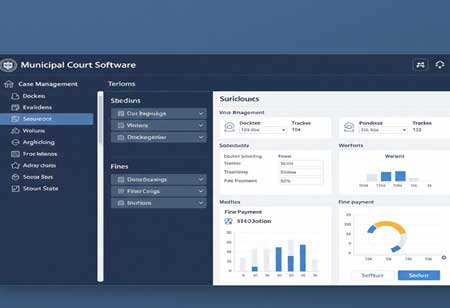THANK YOU FOR SUBSCRIBING
Be first to read the latest tech news, Industry Leader's Insights, and CIO interviews of medium and large enterprises exclusively from Gov CIO Outlook
THANK YOU FOR SUBSCRIBING

By
Government CIO Outlook | Thursday, July 03, 2025
Stay ahead of the industry with exclusive feature stories on the top companies, expert insights and the latest news delivered straight to your inbox. Subscribe today.
Fremont, CA: In an increasingly digital world, public sector entities, particularly courts and correctional services, are embracing Software-as-a-Service (SaaS) solutions to enhance efficiency, streamline operations, and improve service delivery. However, the sensitive nature of the data managed by these institutions – from personal information and criminal records to case details and inmate data – elevates security from a priority to an absolute imperative. Building and maintaining public trust in these mission-critical SaaS deployments hinges entirely on a robust, multi-layered security posture.
Key Security Imperatives for Public Sector SaaS
To strengthen mission-critical SaaS for courts and correctional services and build public trust, agencies must prioritize several security imperatives. These include robust data security and encryption, ironclad identity and access management, comprehensive compliance and regulatory adherence, proactive threat protection and continuous monitoring, robust data loss prevention and disaster recovery, as well as fostering a security-conscious culture. Importantly, vendor risk management and transparent communication play a key role in this process, ensuring that we select the most secure and reliable SaaS providers.
Sensitive data must be protected through robust encryption protocols, and agencies should inquire about SaaS providers' encryption standards and implement their encryption measures. Ironclad Identity and Access Management (IAM) is crucial, with multi-factor authentication and role-based access control. Continuous monitoring of user activity, a proactive measure, can help detect anomalous behavior and identify potential insider threats, providing reassurance about the robustness of our security measures.
Compliance with stringent regulations, such as CJIS, HIPAA, FIPS, SOC, PCI, and GDPR, is essential for SaaS solutions. Agencies should conduct thorough audits of potential SaaS providers, understand data residency and sovereignty, maintain audit trails, deploy advanced malware prevention solutions, implement vendor-agnostic backup and recovery strategies, and most importantly, have a comprehensive business continuity plan to ensure operations can continue in the event of a disaster.
Building and Sustaining Public Trust
For courts and correctional services, maintaining public trust is of the utmost importance. Any data breach—or even the perception of a security vulnerability—can significantly undermine this trust and, by extension, the credibility of the justice system. By prioritizing robust security measures, public sector agencies can uphold key responsibilities. These include demonstrating accountability through a clear commitment to safeguarding sensitive citizen data, ensuring the integrity and reliability of critical legal and correctional records, and maintaining operational continuity in the face of potential cyber threats. Most importantly, such a proactive approach fosters public confidence, reassuring citizens that their personal and legal information is protected with the highest level of care and professionalism.
The journey to digital transformation in the public sector, particularly within the sensitive domains of courts and correctional services, is complex but necessary. By making security a foundational pillar of every SaaS implementation, government agencies can not only unlock the immense benefits of cloud technology but also solidify the public trust that is the bedrock of their mission.
I agree We use cookies on this website to enhance your user experience. By clicking any link on this page you are giving your consent for us to set cookies. More info



